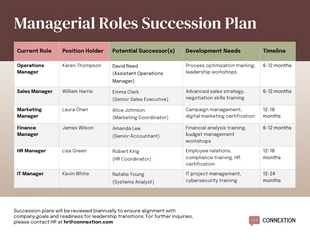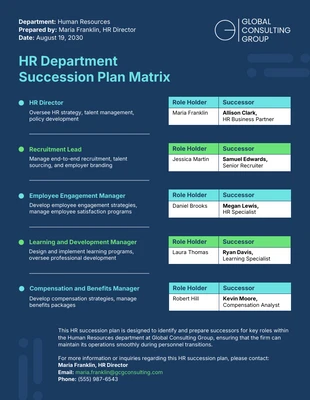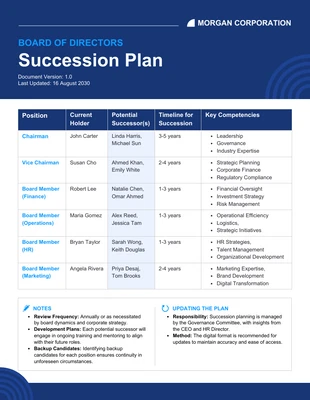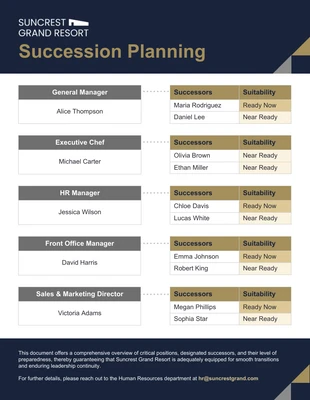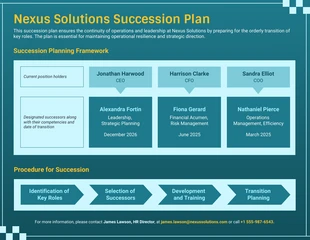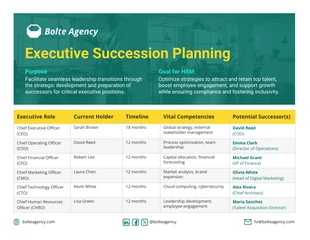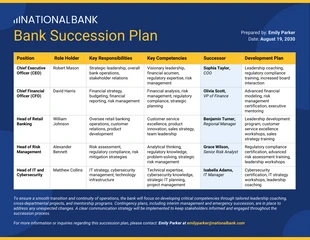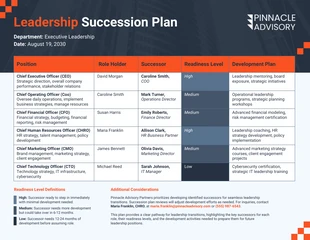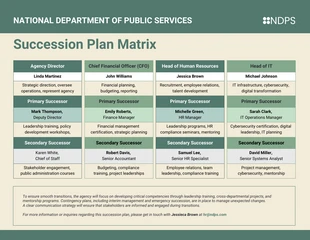
Succession Planning Template
Help your organization identify and hone potential successor candidates by personalizing this succession planning template.
100% customizable templates
Millions of photos, icons, charts and graphics
AI-powered editing features
Effortlessly share, download, embed and publish
Easily generate QR codes for your designs
- Design stylemodern
- Colorslight
- SizeLetter (11 x 8.5 in)
- File typePNG, PDF, PowerPoint
- Planfree
An organization comprises people with varying skills, knowledge, and experience. This diversity in those areas results in different organizational roles and responsibilities. Over time, as people move on to other opportunities or retire, these positions and obligations need to be assumed by someone else. The best way to do this is through succession planning. The process of identifying and developing individuals who have the potential to fill critical roles in a company is called succession planning. It is a proactive approach to ensuring that an organization has the right people to meet its future needs. Succession planning guarantees that a pipeline of talent is ready to step into roles as they become vacant when an individual leaves the organization, whether due to retirement, resignation, or death. There are many benefits to succession planning, such as ensuring the organization's continuity, maintaining or improving levels of performance, developing a talent pool from which to draw upon as needed, reducing the risk of disruptions due to turnover, and building a bench of leaders for the future. However, succession planning is not a one-time event. It is an
